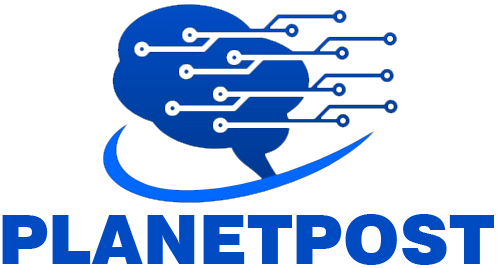Simon Randall is the CEO and Co-Founder of Pimloc a tech company dedicated to visual privacy and security. The risks associated with video surveillance have fundamentally shifted – we are all unknowingly giving away our freedom by walking down the street, entering a store, going to work or watching a sports game. To counter this Pimloc is developing systems that will allow businesses and public organisations to increase security and extract valuable analytics data without compromising personal privacy.
Pimloc’s SecureRedact privacy platform leverages AI to automatically blur personal and sensitive data in captured and live security videos. This enables organizations to responsibly handle footage from CCTV, body-worn, and dash cameras by protecting and redacting personal data, such as faces and license plates.
Can you explain the key features and benefits of Pimloc’s Secure Redact privacy platform?
Pimloc’s Secure Redact is a world-leading video privacy platform designed for selectively anonymizing personal data in video content. The platform features two main components: the first detects personal data within video footage for redaction, and the second provides intelligent tools for quickly reviewing and editing the results.
Key features and benefits of Secure Redact include:
- Automatic Blurring – Secure Redact automatically blurs all personal and sensitive data in both captured and live security video.
- Versatile Footage Compatibility – The platform supports various types of footage, including CCTV, body-worn cameras, dash cams and more.
- Comprehensive Redaction – It enables the redaction of all video files for DSARs (Data Subject Access Requests), FOIAs (Freedom of Information Act requests), ROAs (Right of Access requests) and incident videos.
- Responsible Live Video Usage – Secure Redact allows for the responsible use of live video with anonymized real-time people and vehicle analytics, activity-based live alerts, and broader data sharing.
An hour of CCTV footage can contain over two million faces. Manually redacting personal data from every frame is a time-consuming, tedious task that demands considerable attention to detail. Compliance managers may need days or even weeks to redact just a few minutes of video. By protecting all personal data in video by default, businesses can remain compliant while sharing video content internally or with third parties.
How does Secure Redact leverage AI to automate the redaction of personal and sensitive data in video footage?
Secure Redact uses advanced machine learning and computer vision techniques to recognize and redact personally identifiable information (PII) in various image and video contexts, such as faces and license plates.
Pimloc’s AI models accurately detect and redact PII even under challenging conditions. These deep learning algorithms are trained on domain-specific videos from sources like CCTV, body-worn cameras, and road survey footage.
The AI leverages supervised learning and proprietary deep learning techniques, trained on a large variety of photos and video frames from diverse environments and cameras. This enables the detection of PII in videos, even when the quality is low.
Unlike many visual AI systems trained on public images from social media and photo libraries, Pimloc’s models are specifically tailored to handle security footage. This includes varying angles, positions, and scenes typical of CCTV, body-worn cameras, and dash cams. Body-worn cameras, in particular, present challenges due to their movement, causing significant shake and rotation.
Moving cameras complicate people tracking, as frame-to-frame movement can render standard tracking techniques ineffective. Tracking is essential to keep an individual, such as a suspect or person of interest, visible in a video clip.
Many other AI use cases can manage with mediocre performance since they provide indicative answers and/or use multiple frames to classify an entity. However, for privacy, our AI must generalize across a highly diverse corpus of security footage and achieve a very high level of accuracy to provide utility and protection.
What are the main differences in data privacy regulations between the US and the UK/EU, and how is Pimloc addressing these differences?
Historically, the US has trailed behind the UK and EU in terms of data privacy regulations. However, with the emergence of federal and state laws, compliance has become increasingly crucial for US organizations.
In the US, the primary framework for data privacy is the American Privacy Rights Act (APRA), currently under consideration by Congress. APRA aims to establish national consumer data privacy rights and set standards for data security, aiming to unify the existing patchwork of state and federal data protection measures.
Similar to the European Union’s General Data Protection Regulation (GDPR) enacted in 2016, APRA focuses on safeguarding personal information and empowering individuals with greater control over their data, including video data. Despite potential changes or non-passage of APRA, the evolving landscape ensures that video data privacy remains a critical consideration in our digital age.
Pimloc’s Secure Redact addresses these regulatory differences by effectively anonymizing personal data within video content. This approach aligns with guidelines from regulatory bodies such as the Information Commissioner’s Office (ICO) in the UK, European data protection authorities and the US Department of Justice (DOJ), ensuring both legal compliance and practical security measures.
How can US organizations use Secure Redact to ensure compliance with emerging federal and state data privacy laws like CCPA and APRA?
As US businesses refine their privacy practices, drawing insights from European regulations can strengthen compliance efforts and confer competitive advantages.
Secure Redact aids US organizations in adhering to evolving data privacy laws such as CCPA and APRA. It automates the anonymization of personal data in video content, ensuring regulatory compliance. Leveraging advanced AI, Secure Redact streamlines compliance processes, minimizes manual errors and enhances data protection practices, fostering trust and bolstering competitiveness in the marketplace.
Can you share some examples of how Secure Redact is currently being used by organizations to protect personal data in video footage?
Secure Redact has empowered hundreds of organizations to significantly expedite the anonymization of video footage, ensuring compliance with regulatory requirements and fostering trust with stakeholders.
Our client base spans diverse sectors such as law enforcement, transportation, entertainment, insurance, health and security. While the subject matter and volume of video content vary widely, the need for effective data privacy solutions remains consistent.
Public and private sector organizations, including online marketplaces, healthcare providers, transport companies, retailers and schools, leverage Secure Redact to manage video data privacy and security. This includes compliance with data protection laws, responding to freedom of information requests, and facilitating secure data sharing across business operations.
What challenges do organizations face when trying to balance data privacy with the operational value of video data, and how does Pimloc help overcome these challenges?
Organizations today encounter significant challenges when balancing the operational benefits of video data with stringent data privacy requirements. With the increasing global emphasis on data protection laws, the need to safeguard personal information has become paramount.
For entities managing video data, such as CCTV footage, compliance with data subject access requests and freedom of information mandates often necessitates the removal of identifiable information. This includes selectively anonymizing sensitive identifiers to ensure compliance before sharing or processing video for analytics or legal purposes.
How does Pimloc’s platform handle real-time video streams, and what are the potential applications of this technology in various industries?
Pimloc’s Secure Redact platform can take in live video feeds, anonymize them in real-time, and then re-broadcast them for viewing. This allows live video feeds to be viewed more broadly by people outside of a specific Security Operations Centre (SOC), enabling operations to monitor environments in real-time or review activities for evaluation and QA purposes.
Knowing how many people are in an area, how they are moving and interacting, and monitoring queuing, loitering, and general activity is extremely valuable and can be done without needing access to personal data.
Anonymized live feeds allow cameras to be deployed in more sensitive and protected areas, allowing safety to be managed in parallel with privacy. Certain areas of schools, hospitals, and care facilities can be responsibly monitored without impeding citizens’ freedoms.
Counter-intuitively, live video anonymization actually allows more freedom to use and share data. Privacy protection opens up live video data for access, enabling more people to be kept safe, facilities to be run more efficiently, and more video to be captured and utilized. This provides the freedom to share video securely and responsibly.
What deployment options does Pimloc offer for its Secure Redact platform, and how do they cater to different organizational needs?
Pimloc provides flexible deployment options for its Secure Redact platform, accessible either through SaaS or integration into existing systems via APIs.
Our SaaS solution allows customers to manage their accounts, upload footage and review/edit/update detections before redaction and usage. This model suits organizations comfortable with Pimloc acting as the data processor.
Alternatively, for customers preferring full control as both data controller and processor, Secure Redact can be deployed on their own servers. This approach accommodates diverse organizational needs, ensuring compliance and customization while leveraging our advanced redaction capabilities.
How does Pimloc ensure the accuracy and efficiency of its video redaction services, and what role does machine learning play in this process?
Pimloc’s technology is renowned for the precision and speed of our machine learning platform in automatically detecting and redacting personal identifiers. Our solutions enable customers to perform these tasks up to 200 times faster than traditional manual editing methods.
Our AI is trained on a wide range of real-world images and video footage, surpassing competitors in scope and continually advancing. We maintain internal accuracy standards that surpass customer and regulatory requirements, ensuring robust protection of personal data across all video content.
Continuously enhancing performance, our team leverages AI solutions specifically designed for video privacy. This integration creates a seamless feedback loop, ensuring world-class service reliability.
By automating detection and redaction, Pimloc eliminates the need for manual, error-prone processes, enabling customers to confidently deploy anonymized and secure content.
How do you see the landscape of data privacy evolving in the next few years, and what steps should organizations take to stay ahead of these changes?
In the coming years, data privacy regulations are expected to become more stringent and globally unified. Organizations must proactively integrate robust privacy measures into their operations to comply with evolving laws.
Implementing a privacy layer, such as Secure Redact, that automatically anonymizes video content can preemptively address compliance with future data protection regulations. This approach not only accelerates and simplifies video handling and sharing processes but also supports innovation in data usage.
As data protection laws increasingly treat video as personal data, organizations across sectors—whether public or private—need scalable solutions that prioritize privacy by design. Adopting a video management system with built-in privacy features ensures readiness for regulatory shifts and promotes responsible data stewardship.
Thank you for the great interview, readers who wish to learn more should visit Pimloc.



